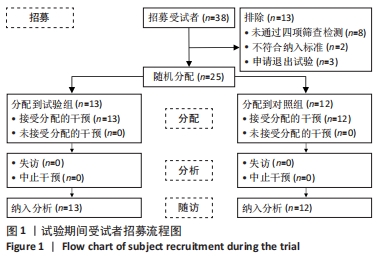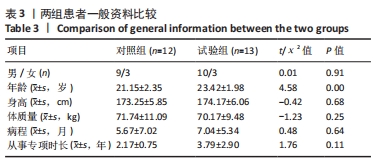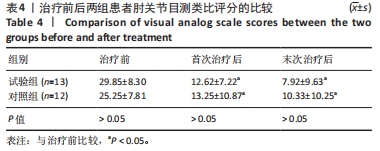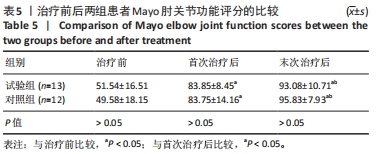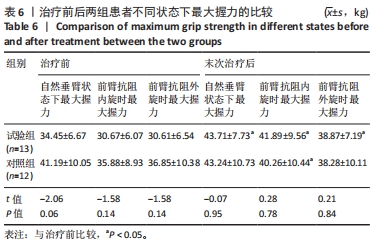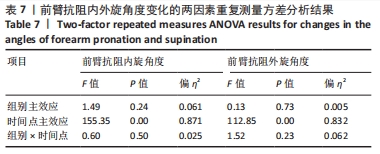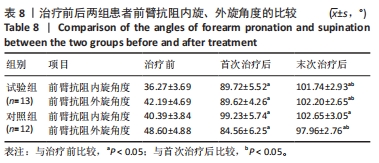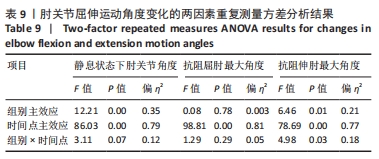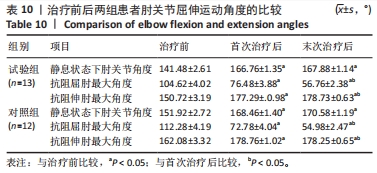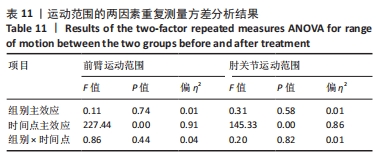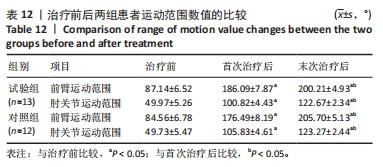[1] EYGENDAAL D, RAHUSSEN FT, DIERCKS RL. Biomechanics of the elbow joint in tennis players and relation to pathology. Br J Sports Med. 2007; 41(11):820-823.
[2] LEE HS, PARK HY, YOON JO, et al. Musicians’ medicine: musculoskeletal problems in string players. Clin Orthop Surg. 2013;5(3):155-160.
[3] DEGEN RM, CONTI MS, CAMP CL, et al. Epidemiology and DiseaseBurden of Lateral Epicondylitis in the USA: Analysis of 85,318 Patients. HSS J. 2018;14(1):9-14.
[4] BISSET LM, VICENZINO B. Physiotherapy management of lateral epicondylalgia. J Physiother. 2015;61(4):174-181.
[5] TAYLOR SA, HANNAFIN JA. Evaluation and management of elbow tendinopathy. Sports Health. 2012;4(5):384-393.
[6] WALZ DM, NEWMAN JS, KONIN GP, et al. Epicondylitis: pathogenesis, imaging, and treatment. Radiographics. 2010;30(1):167-184.
[7] ABEN A, DE WILDE L, HOLLEVOET N, et al. Tennis elbow: associated psychological factors. J Shoulder Elbow Surg. 2018;27(3):387-392.
[8] WEBER C, THAI V, NEUHEUSER K, et al. Efficacy of physical therapy for the treatment of lateral epicondylitis: a meta-analysis. BMC Musculoskelet Disord. 2015;16:223.
[9] VULPIANI MC, NUSCA SM, VETRANO M, et al. Extracorporeal shock wave therapy vs cryoultrasound therapy in the treatment of chronic lateral epicondylitis. One year follow up study. Muscles Ligaments Tendons J. 2015;5(3):167-174.
[10] ALTAY T, GUNAL I, OZTURK H. Local injection treatment for lateral epicondylitis. Clin Orthop Relat Res. 2002;(398):127-130.
[11] BODEN AL, SCOTT MT, DALWADI PP, et al. Platelet-rich plasma versus Tenex in the treatment of medial and lateral epicondylitis. J Shoulder Elbow Surg. 2019;28(1):112-119.
[12] HUBBARD MJ, HILDEBRAND BA, BATTAFARANO MM, et al. Common Soft Tissue Musculoskeletal Pain Disorders. Prim Care. 2018;45(2):289-303.
[13] SUAREZ-RODRIGUEZ V, FEDE C, PIRRI C, et al. Fascial Innervation: A Systematic Review of the Literature. Int J Mol Sci. 2022;23(10):5674.
[14] KONDRUP F, GAUDREAULT N, VENNE G. The deep fascia and its role in chronic pain and pathological conditions: A review. Clin Anat. 2022; 35(5):649-659.
[15] WEISS K, KALICHMAN L. Deep fascia as a potential source of pain: A narrative review. J Bodyw Mov Ther. 2021;28:82-86.
[16] PAVAN PG, STECCO A, STERN R, et al. Painful connections: densification versus fibrosis of fascia. Curr Pain Headache Rep. 2014;18(8):441.
[17] STECCO A, MENEGHINI A, STERN R, et al. Ultrasonography in myofascial neck pain: randomized clinical trial for diagnosis and follow-up. Surg Radiol Anat. 2014;36(3):243-253.
[18] BITRA M, SUDHAN SG. Instrument Assisted Soft Tissue Mobil-isationinthe Management of Musculoskeletal Pain:A Literature Review with Implications for Clinical Practice Guidelines. J Clin Land Diagn Res. 2019;13(12):1-5.
[19] 谭燕泉,吴淑梅,高辉.温针联合推拿治疗肱骨外上髁炎43例效果观察[J].山东医药,2016,56(44):100-101.
[20] 陈香仙,朱国萍.肱骨外上髁炎的推拿与抗阻运动康复研究[J].北京体育大学学报,2011,34(6):71-74.
[21] SEFFRIN CB, CATTANO NM, REED MA, et al. Instrument-Assisted Soft Tissue Mobilization: A Systematic Review and Effect-Size Analysis. J Athl Train. 2019;54(7):808-821.
[22] JONES ER, FINLEY MA, FRUTH SJ, et al. Instrument-Assisted Soft-Tissue Mobilization for the Management of Chronic Plantar Heel Pain: A Pilot Study. J Am Podiatr Med Assoc. 2019;109(3):193-200.
[23] KIM J, SUNG DJ, LEE J. Therapeutic effectiveness of instrument-assisted soft tissue mobilization for soft tissue injury: mechanisms and practical application. J Exerc Rehabil. 2017;13(1):12-22.
[24] 周鑫,朱清广,孔令军,等.推拿手法生物力学研究方法的基本方向[J].中华中医药杂志,2019,34(3):1120-1123.
[25] 严晓慧,严隽陶.推拿手法分类探讨[J].中医报,2017,32(2):300-303.
[26] 王建珠,吴云川,杨小存,等.基于教材建设的“推拿”一词出处探讨[J].中医药导报,2022,28(11):219-221.
[27] LEW J, KIM J, NAIR P. Comparison of dry needling and trigger point manual therapy in patients with neck and upper back myofascial pain syndrome: a systematic review and meta-analysis. J Man Manip Ther. 2021;29(3):136-146.
[28] 徐传英,李伟,叶涛,等.三步推拿法结合功能锻炼治疗腰肌劳损远期疗效观察[J].按摩与康复医学,2020,11(3):26-27+30.
[29] 尹航,董博,康武林,等.肱骨外上髁炎中西医治疗进展[J].辽宁中医药大学报,2022,24(3):132-136.
[30] MCCALLUM SD, PAOLONI JA, MURRELL GA. Five-year prospective comparison study of topical glyceryl trinitrate treatment of chronic lateral epicondylosis at the elbow. Br J Sports Med. 2011;45(5):416-420.
[31] HSU SH, MOEN TC, LEVINE WN, et al. Physical examination of the athlete’s elbow. Am J Sports Med. 2012;40(3):699-708.
[32] GARDNER RC. Tennis elbow: diagnosis, pathology and treatment. Nine severe cases treated by a new reconstructive operation. Clin Orthop Relat Res. 1970;72:248-253.
[33] ZWERUS EL, SOMFORD MP, MAISSAN F, et al. Physical examination of the elbow, what is the evidence? A systematic literature review. Br J Sports Med. 2018;52(19):1253-1260.
[34] 古来撒尔•艾克拜尔,卢旭昇,刘俊昌,等.基于数据挖掘的推拿治疗膝骨关节炎手法及选穴规律分析[J].中国中医药信息杂志, 2022,29(5):23-29.
[35] DORF ER, CHHABRA AB, GOLISH SR, et al. Effect of elbow position on grip strength in the evaluation of lateral epicondylitis. J Hand Surg Am. 2007;32(6):882-886.
[36] 单洁玲,朱俞岚,阮婷婷,等.剪切波弹性成像在辅助软组织松解术后跟腱功能评估中的应用[J].中国康复理论与实践,2021,27(9): 1098-1103.
[37] KIVLAN BR, CARCIA CR, CLEMENTE FR, et al. The effect of Astym® therapy on muscle strength: a blinded, randomized, clinically controlled trial.BMC Musculoskelet Disord. 2015;16(1):325.
[38] SEVIER TL, STEGINK-JANSEN CW. Astym treatment vs. eccentric exercise for lateral elbow tendinopathy: a randomized controlled clinical trial. PeerJ. 2015;3:e967.
[39] 卢淑卿,李鑫,郭津,等.器具辅助松解技术修复慢性软组织损伤瘢痕的优势[J].中国组织工程研究,2020,24(29):4709-4716.
[40] 宋朋飞,朱清广,程艳彬,等.浅谈临床推拿治疗中需要注意的几点事项[J].中华中医药杂志,2017,32(7):2882-2884.
[41] 王立红,杨才德,包金莲,等.杨氏3A+疗法“枕五针”埋线针刀治疗枕大神经及枕小神经痛[C].甘肃省针灸学会.甘肃省针灸学会2016年度学术年会暨针灸推拿科研思路设计培训班郑氏针法的临床应用培训班论文集,2016:177-181.
[42] 赵春海,罗大平,许荣根,等.疗养因子及传统治疗手段的应用与疗养目的之实施[C].中国康复医学会疗养康复专业委员会, 2008:76-80.
[43] ALNASER MZ, ALJADI SH. Physical therapists with work-related musculoskeletal disorders in the state of Kuwait: a comparison across countries and health care professions. Work. 2019;63(2):261-268.
[44] RAHIMI F, KAZEMI K, ZAHEDNEJAD S, et al. prevalence of work-related musculoskeletal disorders in iranian physical therapists: a cross-sectional study. J Manipulative Physiol Ther. 2018;41(6):503-507.
[45] CORNWELL L, DOYLE H, STOHNER M, et al. Work-related musculoskeletal disorders in physical therapists attributable to manual therapy. J Man Manip Ther. 2021;29(2):92-98.
[46] GYER G, MICHAEL J, INKLEBARGER J. Occupational hand injuries: a current review of the prevalence and proposed prevention strategies for physical therapists and similar healthcare professionals. J Integr Med. 2018;16(2):84-89.
[47] BAE YH. Relationships between presenteeism and work-related musculoskeletal disorders among physical therapists in the Republic of Korea. Int J Occup Saf Ergon. 2018;24(3):487-492.
[48] CELIK D, MUTLU EK. Clinical implication of latent myofascial trigger point. Curr Pain Headache Rep. 2013;17(8):353.
[49] SCHILDER A, HOHEISEL U, MAGERL W, et al. Sensory findings after stimulation of the thoracolumbar fascia with hypertonic saline suggest its contribution to low back pain. Pain. 2014;155(2):222-231.
[50] TESARZ J, HOHEISEL U, WIEDENHÖFER B, et al. Sensory innervation of the thoracolumbar fascia in rats and humans. Neuroscience. 2011; 194:302-308.
[51] STECCO C, STERN R, PORZIONATO A, et al. Hyaluronan within fascia in the etiology of myofascial pain. Surg Radiol Anat. 2011;33(10):891-896.
[52] STECCO A, COWMAN M, PIRRI N, et al. Densification: Hyaluronan Aggregation in Different Human Organs. Bioengineering (Basel). 2022; 9(4):159.
[53] FIDUT-WROŃSKA J, CHOŁUJ K, CHMIEL J, et al. Observation using thermography of post-operative reaction after fascial manipulation. Ann Agric Environ Med. 2019;26(3):468-471.
[54] FOUSEKIS K, VARDA C, MANDALIDIS D, et al. Effects of instrument-assisted soft-tissue mobilization at three different application angles on hamstring surface thermal responses. J Phys Ther Sci. 2020;32(8):506-509.
[55] PIANESE L, BORDONI B. The Use of Instrument-Assisted Soft-Tissue Mobilization for Manual Medicine: Aiding Hand Health in Clinical Practice. Cureus. 2022;14(8):e28623.
|

